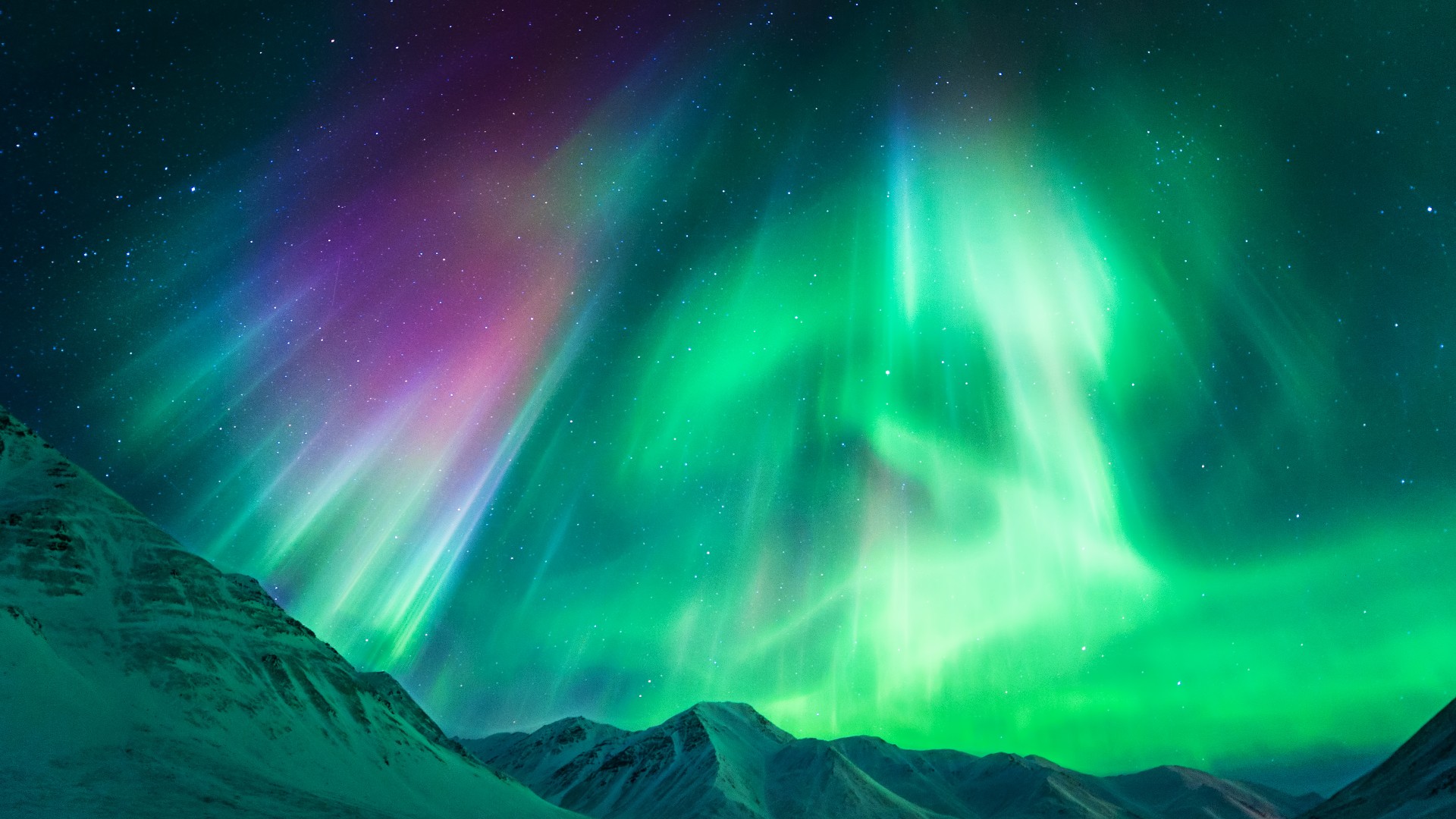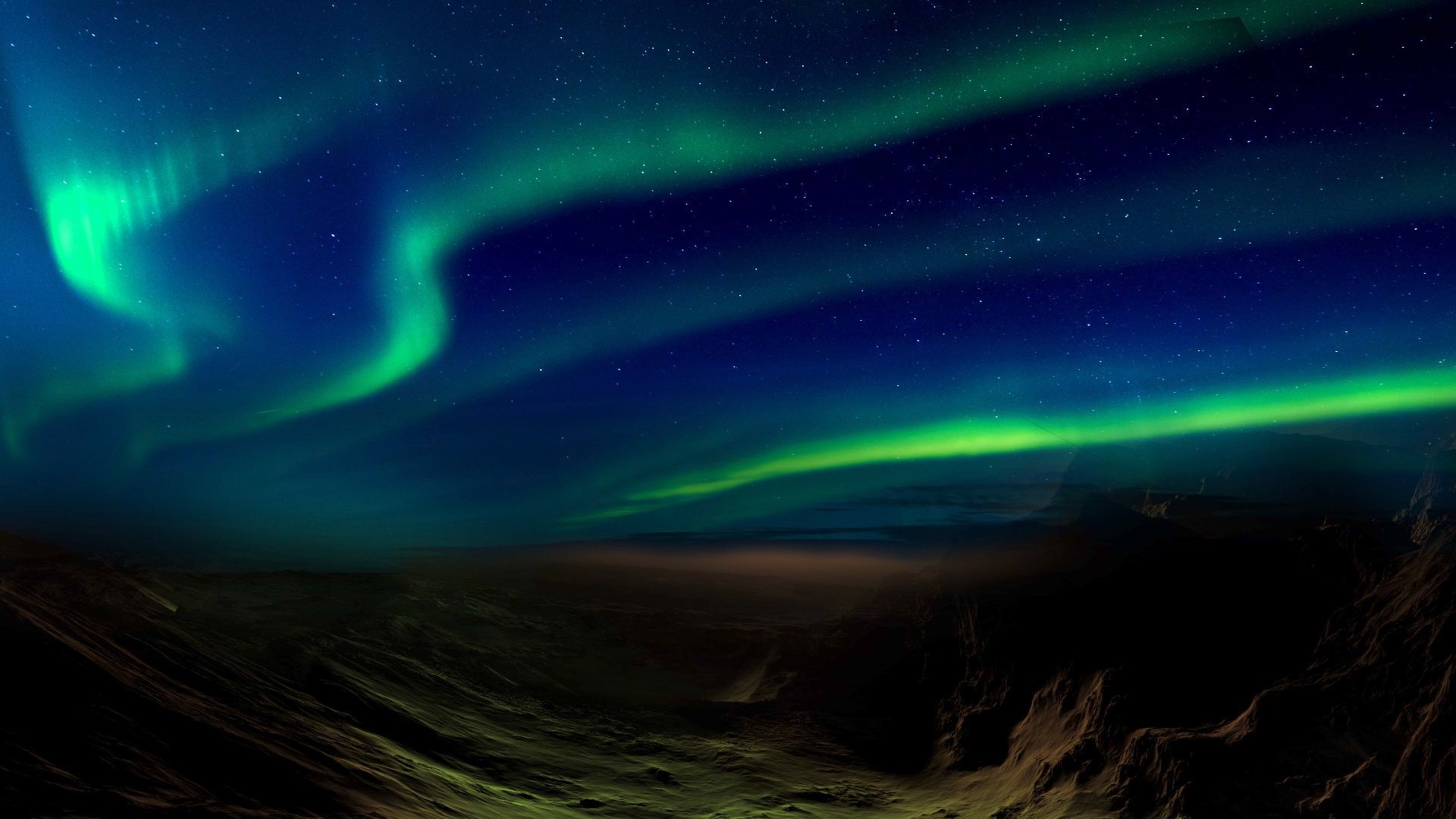
Do extraterrestrial auroras occur on other planets?
The northern lights are spectacular, but they pale in comparison with extraterrestrial auroras.

If you've been lucky enough to glimpse the northern lights, it's an experience you'll likely never forget. These dancing green, red and purple ribbons of light periodically illuminate the night sky from the Arctic Circle down to mid-northern latitudes as far south as New York and London. Similar lights also occur in the Southern Hemisphere, radiating out from the area around Antarctica.
The eerie glow is a phenomenon called an aurora, named after the ancient Greek goddess of dawn. But the origin of an aurora isn't divine; rather, they are caused by energetic solar winds bombarding Earth's upper atmosphere. As photons from these solar winds interact with atmospheric gases, they light up in brilliant colors and are pulled into fantastic shapes along our planet's magnetic lines. "Oxygen is red and green, and the blue or purple is nitrogen," James O'Donoghue, a planetary scientist at the Japanese Aerospace Exploration Agency (JAXA), told Live Science.
But is Earth the only place in the solar system where you can see auroras?
It turns out that auroras aren't unique to our planet; they exist on other celestial bodies, too. And these extraterrestrial auroras take on even more beautiful and exotic forms. "When you look at other planets, the basic rules get changed," Tom Stallard, a planetary astronomer at the University of Leicester in the U.K. told Live Science.
Related: What color is the sunset on other planets?

For example, a recently discovered type of aurora on Mars (known as a "sinuous discrete" aurora) snakes halfway around the Red Planet, despite the fact that Mars has only patchy magnetic field lines. Some auroras on Saturn are generated by weather patterns, according to 2021 research published in the journal Geophysical Research Letters. And Uranus's magnetic field, like the planet itself, is tilted on its axis, causing auroras to take on intricate shapes and form in unexpected regions. "Yeah, it's a mess over there," O'Donoghue said.
By far the most powerful auroras in the solar system occur on Jupiter. These intense bursts of electromagnetic radiation are up to 30 times stronger than those on Earth, a 2017 study in the journal Nature found. But even with all that energy, you probably wouldn't be able to see Jupiter's aurora with your naked eye — most of its light is emitted in wavelengths outside of the visible spectrum. "Infrared is the biggest emitter on Jupiter and Saturn," O'Donoghue said, "And then after that, you've got visible light, X-rays, and radio as well."
Sign up for the Live Science daily newsletter now
Get the world’s most fascinating discoveries delivered straight to your inbox.
Elsewhere in the solar system, the very definition of an aurora breaks down. Normally, auroras are thought of as the incandescent electromagnetic glow produced by solar wind that occurs in a planet's (or moon's) atmosphere. Mercury has no atmosphere to speak of — but it does experience aurora-producing geomagnetic storms. "If you look at Mercury's night side with an X-ray spectrometer, you see the rock on the surface glowing with X-ray emissions," Stallard said, "So that's like a solid state aurora." An X-ray spectrometer detects very high-frequency light waves and is an important tool in astronomy.
Likewise, some of Jupiter's auroras aren't produced by solar winds. Instead, they're generated by particles spewed into the magnetosphere by the planet's volcanic moon, Io, according to NASA.
Now, with next-generation instruments like the James Webb Space Telescope, scientists hope that they may even be able to peer far enough into the universe to detect the first auroras on exoplanets. Nobody knows what these light shows have in store, but it is sure to be spectacular. "Every aurora is interesting and weird and wonderful," Stallard said.
Originally published on Live Science.

Joanna Thompson is a science journalist and runner based in New York. She holds a B.S. in Zoology and a B.A. in Creative Writing from North Carolina State University, as well as a Master's in Science Journalism from NYU's Science, Health and Environmental Reporting Program. Find more of her work in Scientific American, The Daily Beast, Atlas Obscura or Audubon Magazine.









